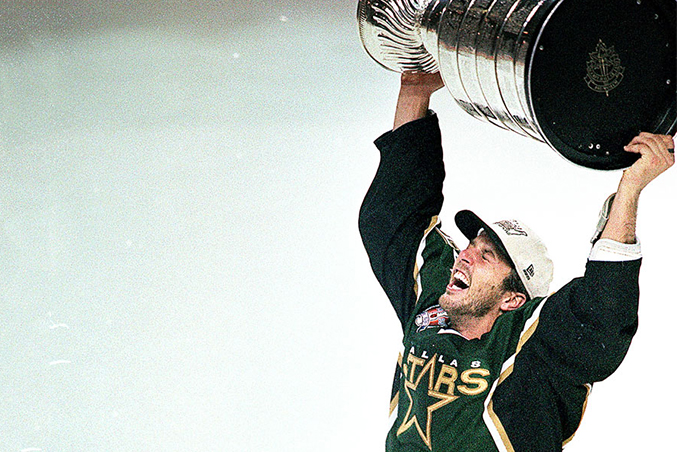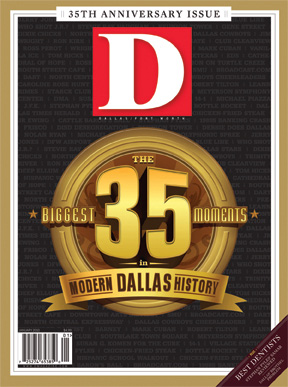In 1993, a shopping mall developer in Calgary, Alberta, named Norm Green moved his hockey team from Bloomington, Minnesota, to Dallas. The move completed Dallas’ portfolio of major-league sports teams and, especially with the team’s Stanley Cup victory in 1999, secured the city’s spot among the best sports towns in the country.
The North Stars had been in Minnesota since 1967 but ultimately lost the support of the community due to several years of poor performance. Finally, in 1989, the owners of the hockey club told the NHL that they wanted to move to California.
John Ziegler, president of the NHL, asked me, as the chairman of the NHL marketing committee, to buy the North Stars and make sure the team stayed in Minnesota as long as possible—which I did, for three years.
As one of the lead and original owners of the Calgary Flames—enjoying 10 years of financial success, including winning the Stanley Cup in 1989—I was convinced that my experience in marketing could rekindle the support of the Minnesota fans. But after renovating the old Met Center and producing a top team that almost won the Stanley Cup in 1991, the fans still didn’t buy the critical season tickets, and attendance still fell under 60 percent. It was obvious we needed to move.
We made a deal to move the North Stars to Anaheim, California, to become the L.A. Stars. Anaheim had a new building for hockey that was immediately available. My plans were canceled when Disney offered to put a team in Anaheim and use Disney talent to help market the NHL. In December 1992, the league asked me to allow Disney to come into the league. In return, I would have NHL approval to move the Stars wherever I could make the best deal. In January 1993, I selected Dallas, after encouragement from the only Texan I knew: Roger Staubach.
Roger explained that Reunion Arena was originally built in 1980 for hockey and was being used only for basketball. He confirmed that it had excellent sightlines, and with some improvements, it would be a perfect interim arena until a new building, with proper revenue streams, could be built. Roger was strategic in the process to introduce us to the community, and the City Council, and helped us make an acceptable deal with Reunion.
Mayor Steve Bartlett promised us quick Council support and a new building within a few years. We made it clear to the mayor and Council that ever-increasing player costs required an 18,000-seat building with revenue streams from improvements like luxury suites. City Manager Jan Hart walked us through the political process.
My longtime friend Frank Gifford called a few of his friends to introduce me to Dallas. One of the first calls Gifford made was to Jerry Jones. As a major sports owner, Jones’ support of the concept of the NHL in Dallas was critical in giving me comfort to know we had selected the correct city. Gifford asked his former football teammate Cloyce Box to buy, and have his friends be sure to buy, season tickets. And they did. We were welcomed and encouraged in several meetings with people like Tom Landry, Ray Hunt, George Bush, Earl Nye, Rusty Rose, and Ron Haddock to ensure the Stars would be successful and supported—and it was.
We were an instant success because, we were told, Dallas loves winners, and we were bringing a top team that had been in the Stanley Cup Finals just two years previous—and a top organization with talented hockey leadership from Bob Gainey, Mike Modano, Ralph Strangis, and Les Jackson (to mention only a few). Most of them are still with the Stars.
The promotional material used to introduce hockey to the community worked wonders. The best were: “The Ice of Texas Is Upon You” and “The Cold War Begins September 21.” The excited sellout crowd at our home opener in October 1993 confirmed our wildest hopes. The Dallas Stars beat Detroit 6-4, with the first goal being scored by a hockey great, Neal Broten.
In our first year, the new fans were rewarded by the success on the ice and in the playoffs. Many of the fans were knowledgeable in hockey, having moved here from northern hockey communities. Others were just excited to see the action of a new, fast contact sport and often responded to action on the ice at the wrong time. We quickly knew we had made the right decision, as our attendance and average ticket price were more than double what we received in Minnesota.
The delay in approving the promised arena, the NHL lockout in 1994, and the tripling of players’ salaries forced us to sell the Dallas Stars in 1996. With the help of Ross Perot Jr., I was fortunate to sell the Stars to Tom Hicks. When the Dallas Stars won the Stanley Cup in 1999, Hicks honored me with a Stanley Cup ring—which I proudly wear every day (except while golfing). The spectacular American Airlines Center was finally opened in 2001 through the leadership and investment of Hicks, Perot, and Mayor Ron Kirk.
In 1993, there was only one poor sheet of ice at Valley Ranch. Now there are almost 30 in the area, with tens of thousands of young people playing hockey and participating in skating programs. I look back with incredible pride at the decision to bring the NHL to Dallas.
Norm Green is a real estate developer and chairman of the board of Perot Systems.






